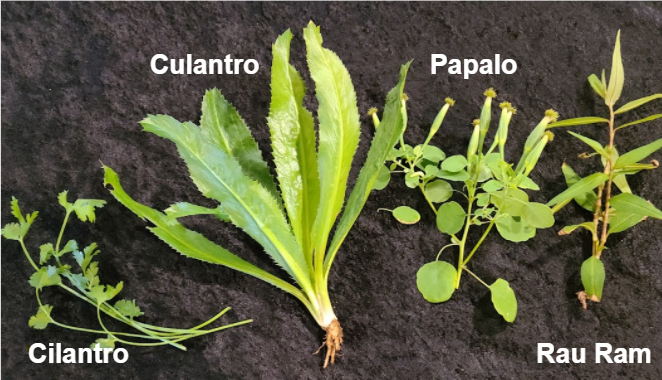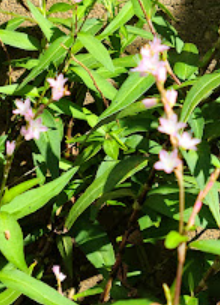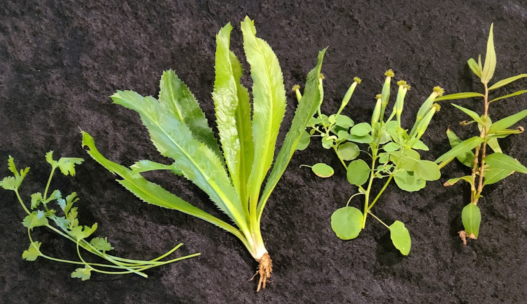
In a word: No.
But, among the different herbs I tried that are “like cilantro,” one stands out as a reasonable substitute, and in many cases, superior to the flavor of cilantro.
The picture above shows cilantro side by side with other herbs used in place of cilantro. Of the three substitutes, papalo has a texture most like cilantro; sadly, it has a flavor least like cilantro. Furthermore, this Mexican herb has a strong pungent odor and taste that makes anything more than a leaf or two overwhelming. It is, however, beautiful. Its leaves have scalloped edges and the plant propagates well with dandelion-like seeds that disperse into the wind. It’s a little invasive, to be honest. We’ve had this plant from time to time at the plant exchange. One visitor really hated the smell, finding it obnoxious. I guess that’s where it gets its nickname of skunkweed. I don’t agree; I love when my cat brushes up against it and comes in smelling herbal. If you Google the plant, you’ll find all kinds of descriptions for its flavor. It is like nothing else I’ve had, so I’ll say it is papalo-flavored.

To the right of the papalo plant, is Rau Ram, also known as Vietnamese mint, Vietnamese coriander, Vietnamese cilantro, etc. . .It is used heavily in Vietnamese cooking. It is quite nice in a green papaya salad, or cut thinly into any salad. I find the flavor much like cilantro with a bit of a floral sweetness. The flavor is strong, but nowhere near the level of papalo. As far as growing, it is like mint. It will keep spreading and spreading, and when it runs out of room, it will die back. Also like mint, it loves moist soil. The plant does flower, giving off spikes of tiny pink blossoms. It’s a plant well worth keeping on hand, and when we do bring it to the exchange, it’s a popular choice.
Lastly, there is culantro, also known as sawtooth coriander, recao and ngò gai, among other names. You may recognize the leaf from your last visit to a pho restaurant. In my opinion, if I had to grow just one cilantro substitute, this would be the plant.
The culantro flavor is like cilantro but more intense. Unlike papalo or Rau Ram though, you can add more leaves and still not be overwhelmed. The texture and appearance is unlike cilantro, but those are minor differences. I use the culantro leaves in almost everything I would use cilantro for. If the leaf is older, I may trim it down to remove the spiky edge, but others tell me they don’t. Cooked, culantro is tender enough to eat as is. Raw, it’s not as delicate as cilantro and needs to be minced into thin strips. Again, I’ve had people tell me they eat it as is, crunchy is fine.
Here’s where I find culantro exceptionally useful: the freezer. I wash and trim the leaves, then freeze them for convenience. They are wonderful for soup stock and cooking. They also soften up a tad in the freezer and impart more flavor to the stock. I’ve also added a leaf before making rice, and it gives a new flavor to the otherwise bland staple. Using it like you might use a bay leaf is just one suggestion.
As far as growing culantro, it’s a breeze. It’s essentially a perennial that will on occasion grow a sprout of spiky seeds. I usually cut off the spike unless I want seeds. The plant responds by growing shoots on the side which can be removed to start new plants to bring to the exchange. This plant is drought-tolerant and can withstand Hawaii’s hot summers.
Although there are a few substitutes for cilantro, cilantro will never be replaced. Cilantro is delicate, flavorful and most importantly, beautiful. None of the substitutes listed above come anywhere near its visual allure on a plate. For flavor, however, there are viable alternatives.
